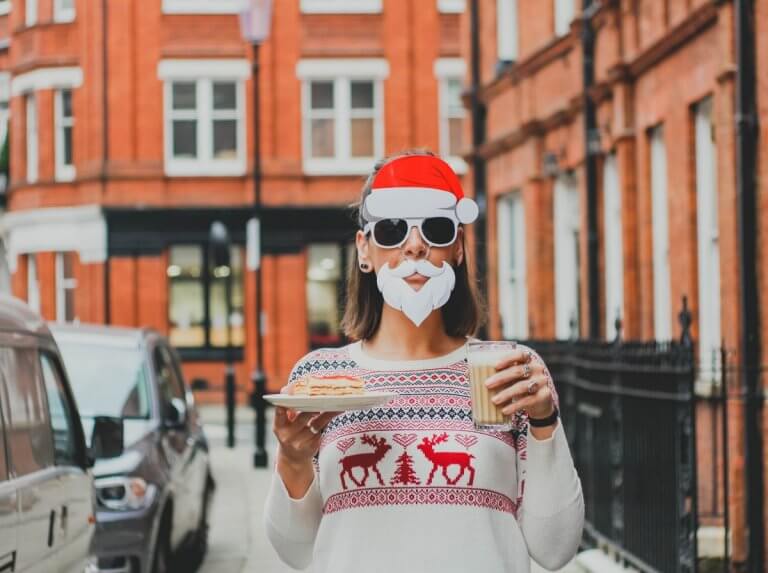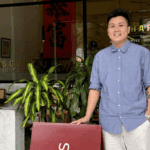
Lots of you are probably considering taking a year out of university to study or work abroad. Perhaps you are considering studying a full degree in a country you’ve never been to, or you’re pursuing a postgraduate course far from home.
We know that one of the most difficult times to be away from home is the festive season, when everyone in the family gets together to celebrate and the country is filled with festive cheer.
If you’re worried about studying abroad and missing the Christmas traditions of home, never fear, we’re going to take a look at how the festive season is celebrated around the world, picking up on common themes of this shared experience.
But first, let’s consider how different stories from different cultures around the world have shaped the way the festive season is celebrated today. People of the Christian faith celebrate the holiday as it marks the birth of the Messiah, Jesus Christ. We’re all familiar with the nativity story of the Joseph the carpenter, the Virgin Mary and the donkey looking for a place to stay, finally birthing a child in a stable where they were visited by shepherds and the three kings.
The other, and perhaps these days, more significant figure of the Christmas period is Father Christmas, Santa Claus, Saint Nicholas or Kris Kringle; a big, friendly, bearded man in a red suit who drives a sleigh pulled by reindeer to drop down the chimneys of houses and put presents in the stockings of well behaved children.
Incredibly, the figure of Saint Nicholas has roots in Germanic Paganism, Norse Mythology and Church Folklore. Not only is Christmas based on the traditional Christian story, but more diverse stories and traditions from around the world, so it’s’ no surprise that Christmas is celebrated differently everywhere – and don’t forget many countries and people don’t celebrate it at all!
Let’s take a look at some countries with interesting Christmas traditions.
Spain
In Spain, the timings and order of festive activities greatly differs from the UK and USA. Most families eat their main Christmas meal, seafood in some regions, on Christmas Eve, called Nochebuena, before the Midnight Mass church service or ‘La Misa Del Gallo’ (The Mass of the Rooster).
December the 28th is ‘Día de los santos inocentes’, or ‘Day of the Innocent Saints’, and is very much like April Fools Day in the UK and US.
New Year’s Eve is called ‘Nochevieja’, or ‘The Old Night’, in Spain, and one special tradition is that you eat 12 grapes with each of the 12 strokes of the clock at midnight! Each grape represents a month of the coming year, so eating all 12 grapes is said to bring you luck.
The main part of the Christmas story that’s celebrated in Spain is Epiphany, which takes place on January 6. It’s called ‘Fiesta de Los tres Reyes Magos’, which means ‘The festival of the three Magic Kings’ in English. Epiphany celebrates the Three Kings or Wise Men bringing gifts to baby Jesus.
Children open some presents on Christmas Day, but most are opened at Epiphany and it’s the kings who deliver the presents rather than Santa Claus. On Epiphany Eve, (January 5) children leave shoes on windowsills or balconies or under the Christmas Tree to be filled with presents.
Most big towns and cities have Epiphany Parades. A special cake called ‘Roscón’, meaning ‘ring shape roll’, is eaten at Epiphany. It’s very doughy and can be filled with cream or chocolate, or even a little gift!
China
In China, only about one percent of the population is Christian, so Christmas is only really celebrated in major cities.
Santa Claus is called ‘Shen Dan Lao Ren’ (‘old Christmas man’) and some postmen dress up as Santa when delivering letters before Christmas!
Christmas parties are becoming a popular occasion for many young people in cities and at Christmas young couples buy gifts for each other, a bit like Valentine’s day.
Only a few people have a Christmas Tree in China, and those who do usually opt for on that’s normally plastic and decorated with paper chains, paper flower and paper lanterns (they might also call it a tree of light).
A tradition that’s becoming popular on Christmas Eve in China is giving apples. Many shops sell apples wrapped up in colored paper. In Chinese, Christmas Eve is called “Ping’an Ye” (平安夜), meaning peaceful or quiet evening and the word for apple in Mandarin is “píngguǒ” (苹果) which sounds like the word for peace.
Australia
In Australia, Christmas falls at the beginning of the summer and is often scorching hot!
Australians decorate their houses with wreaths and lights like the USA and UK but they also use bunches of ‘Christmas Bush’ – a native Australian tree with small green leaves and cream colored flowers. In summer the flowers turn a deep shiny red over a period of weeks (generally by the week of Christmas in Sydney).
On Christmas day the main meal is normally eaten at lunch. Most people have a cold Christmas dinner, or a barbecue with seafood such as prawns and lobsters along with the ‘traditional English’ food and Christmas crackers.
There are also huge Christmas pageants, festivals and parades and fireworks displays. Many towns, cities and schools also hold Carols by Candlelight services, with local bands and choirs sometimes performing Christmas Carols and songs.
As it is the middle of Summer in Australia at Christmas time, the words to the carols about snow and the cold winter are sometimes changed to special Australian words and there are some original Australian carols.
Brazil
Christmas also falls over summer in Brazil and although many Christmas customs are similar to those in the US or UK, many people here like to go to the beach.
Many Brazilian Christmas traditions come from Portugal as Portugal ruled Brazil for many years. Nativity Scenes, known as ‘Presépio’, are set-up in churches and homes throughout December. Like the Spanish, Brazilians will eat a large Christmas meal on Christmas Eve before Midnight Mass.
Most people, especially Catholics, will go to a Midnight Mass service or Missa do Galo (Mass of the Roster) which normally finishes about 1.00am. After the Missa do Gallo there are often big firework displays and in big towns and cities, there are big Christmas Tree-shaped displays of electric lights.
In Brazil, Santa Claus is called Papai Noel & Bom Velhinho (Good Old Man). If children leave a sock near a window and Papai Noel finds it, he’ll exchange the sock for a present!
Epiphany is also widely celebrated in Brazil.
Finland
Finnish people believe Santa Claus or Father Christmas lives in the northern part of Finland called Korvatunturi (or Lapland), north of the Arctic Circle. People from all over the world send letters to Santa Claus in Finland and there is even theme park called ‘Christmas Land’.
In Finland, he is also known as Joulupukki which means ‘Christmas Goat’, because traditionally, a scary Yule Goat asked people for presents rather than giving any out. Over time, the goat became the gift-giver before Santa took over the gift-giving duties, but the name of the Christmas Goat stuck!
Christmas Eve is very special and the most important day for Christmas in Finland. It’s traditional to eat rice porridge and plum fruit juice for breakfast. Then the tree is bought and decorated. At midday, the ‘peace of Christmas’ is broadcast on radio and TV by the City Mayor of Turku (which is south Finland). Many people also like to sauna!
On Christmas day it’s now traditional to go cemeteries and visit the graves of family members because it gets dark so early, at around 3pm. Candles in hanging lanterns are left around the graves until the whole cemetery is alight with glowing lanterns shining in the snow – a true winter wonderland.
The main Christmas meal is eaten in the early evening. Lutefish (salt fish) is the traditional starter, but is not so common nowadays. The main meal is a leg of pork served with mashed potato, traditionally baked slowly in birch-bark boxes in the oven with similarly cooked mashed swede.
After the meal, Joulupukki might visit the house. When the Children are given their presents, the whole family gathers to watch the opening. After opening some presents, most people go to bed, but some like to stay up all night to see Christmas Day arrive!
Animals are given their own Christmas in Finland, with farmers hanging a sheaf of wheat, or bags of nuts or suet on a tree to be eaten.
India
Compared to other religious festivals such as Holi and Diwali, Christmas is quite a small festival in India, since only 2.3 percent of the population is Christian. Having said that, the population of India is over one billion, so there are over 25 million Christians in the country!
Midnight mass is a very important service for Christians in India, especially Catholics,of whom live in Mumbai. The whole family will walk to the service which will be followed by a massive feast of delicacies, mostly curries, before the giving and receiving of presents.
Instead of having traditional Christmas Trees, a banana, mango or other local tree is decorated and sometimes people use mango leaves to decorate their homes. In Southern India, Christians put small oil burning clay lamps on the flat roofs of their homes to show their neighbors that Jesus is the light of the world.
In India, Father Christmas delivers presents to children from a horse and cart. He’s known as ‘Christmas Baba’ in Hindi, ‘Baba Christmas’ in Urdu; ‘Christmas Thaathaa’ in Tamil and ‘Christmas Thatha’ in Telugu; and ‘Natal Bua’ in Marathi. In Kerala state, he’s known as ‘Christmas Papa’.
Nigeria
Christmas in Nigeria, like many other countries worldwide, is a family event. Most who live in cities travel to the villages where their grandparents and older relatives live.
Most homes will have an artificial Christmas tree and the streets are often decorated, too. Christmas cards are sent to friends and family members much like in the UK. In Nigeria, children love to play with firecrackers at Christmas and on Christmas Eve many families will throw Christmas parties that last all night long
Then, on Christmas Morning, people go to church to give thanks to God. The church choir may visit the church congregation in their homes to sing Christmas carols. After the service, presents are exchanged amongst family members and some families may take their children, dressed to impress, to see Santa Claus.
In addition to serving turkey, a traditional Christmas meal in Nigeria may include beef, goat, sheep, ram or chicken and other dishes could be pounded yam, jollof rice, fried rice, vegetable salad and some type of stew.
As you can see the festive season differs around the world, but the main message is one of sharing good food, precious gifts and time with loved ones.
Liked this? Then you’ll love…
5 things to remember before heading home for the holidays
This company is transforming students into full-time Christmas elves







